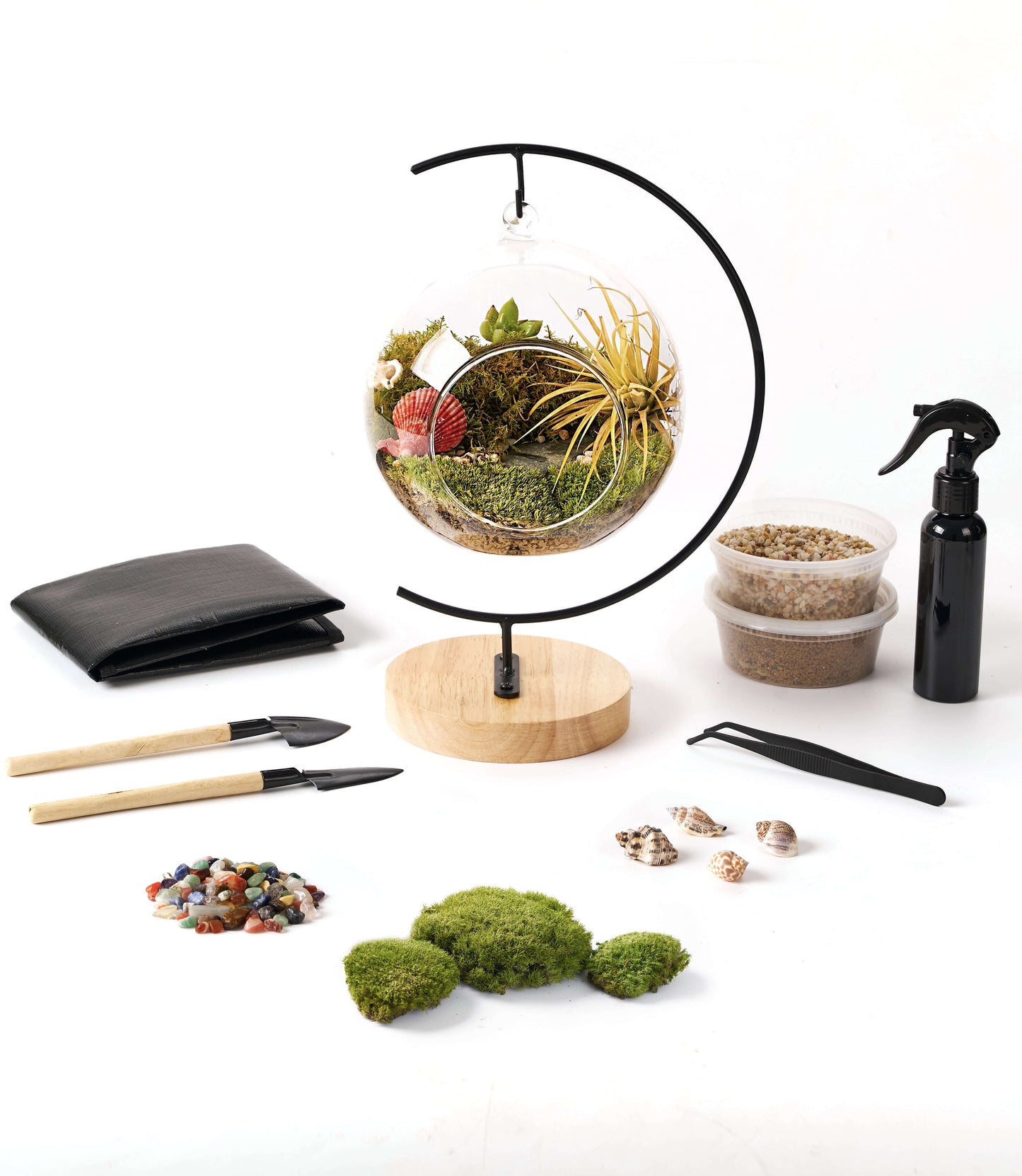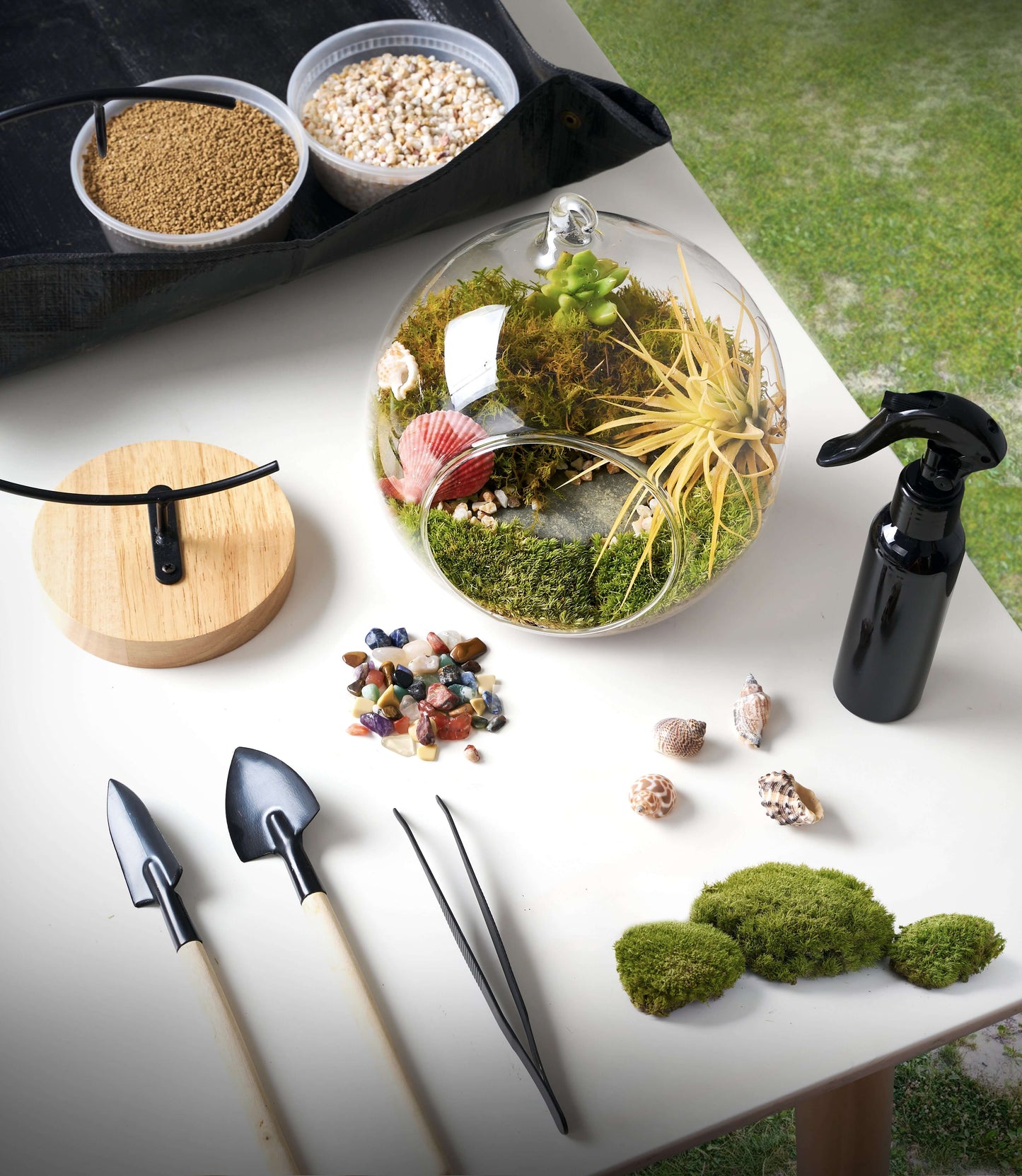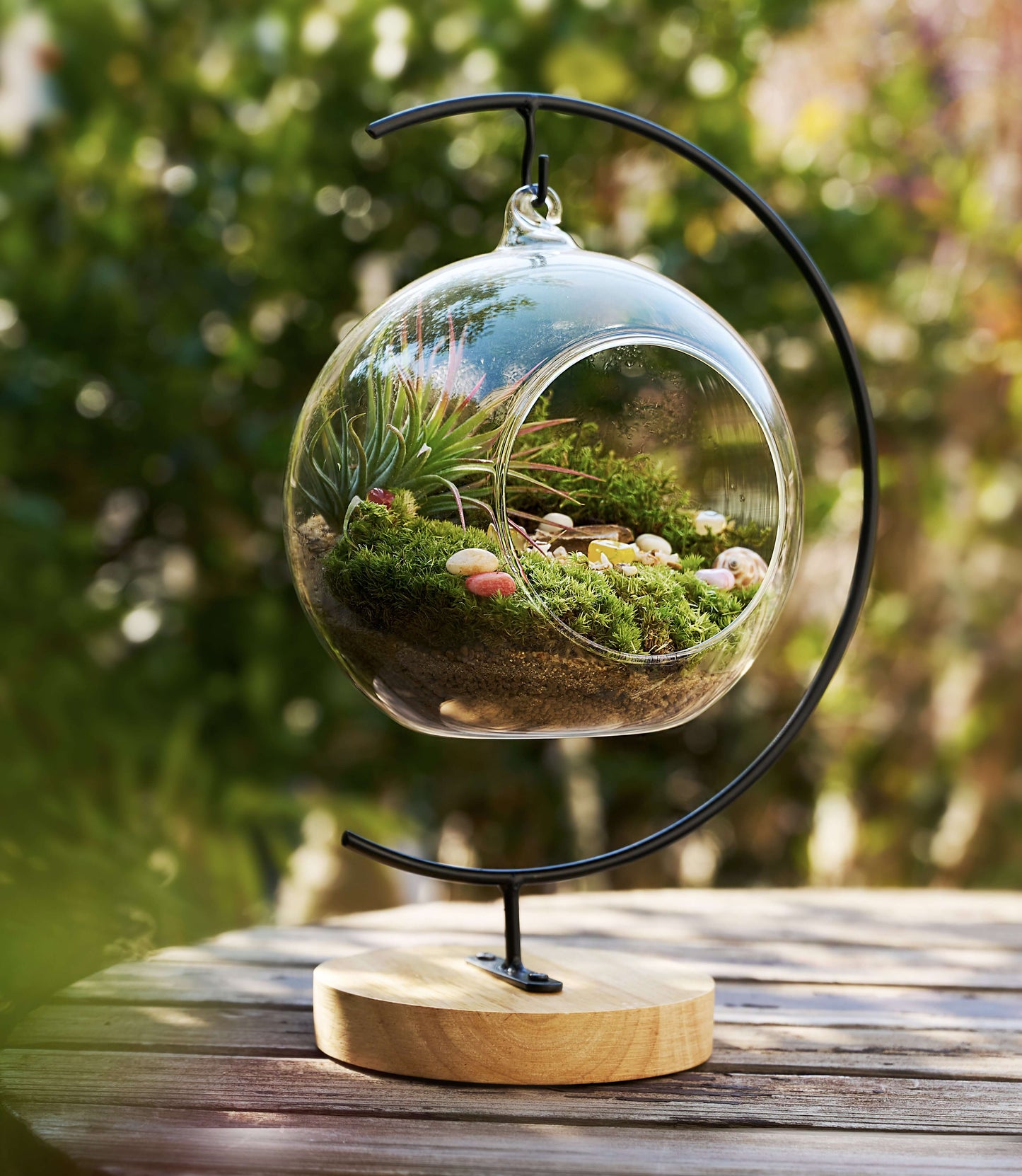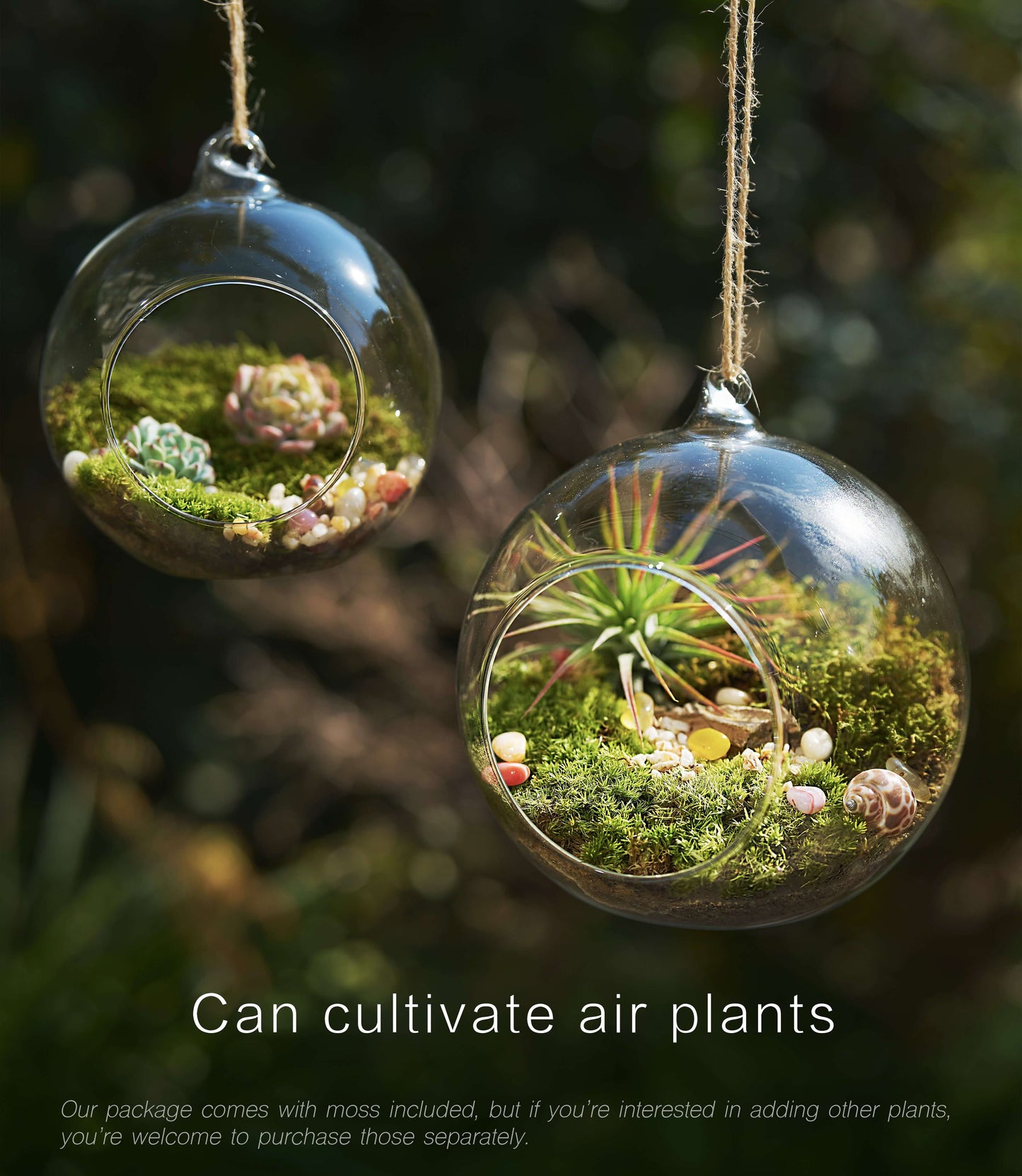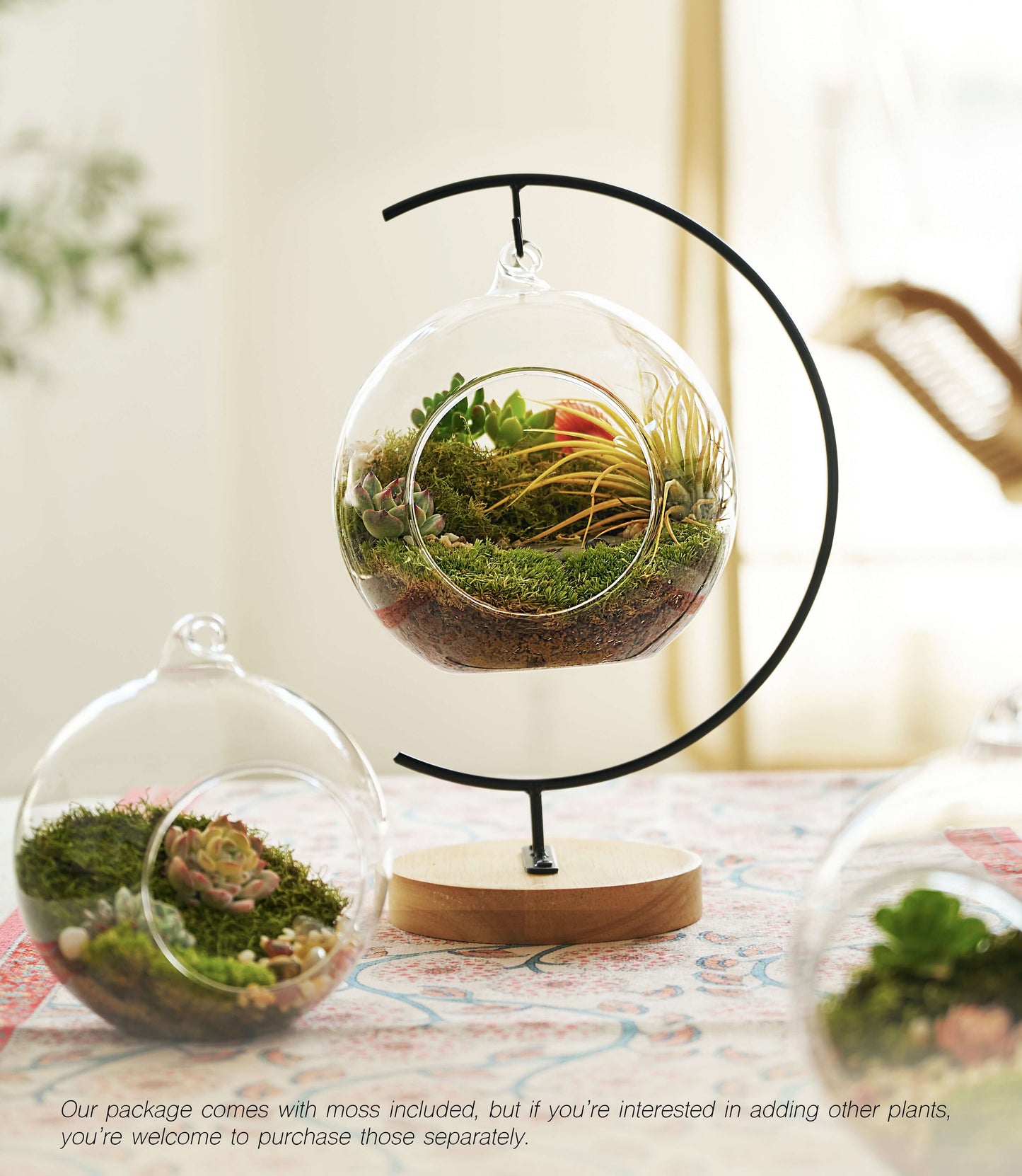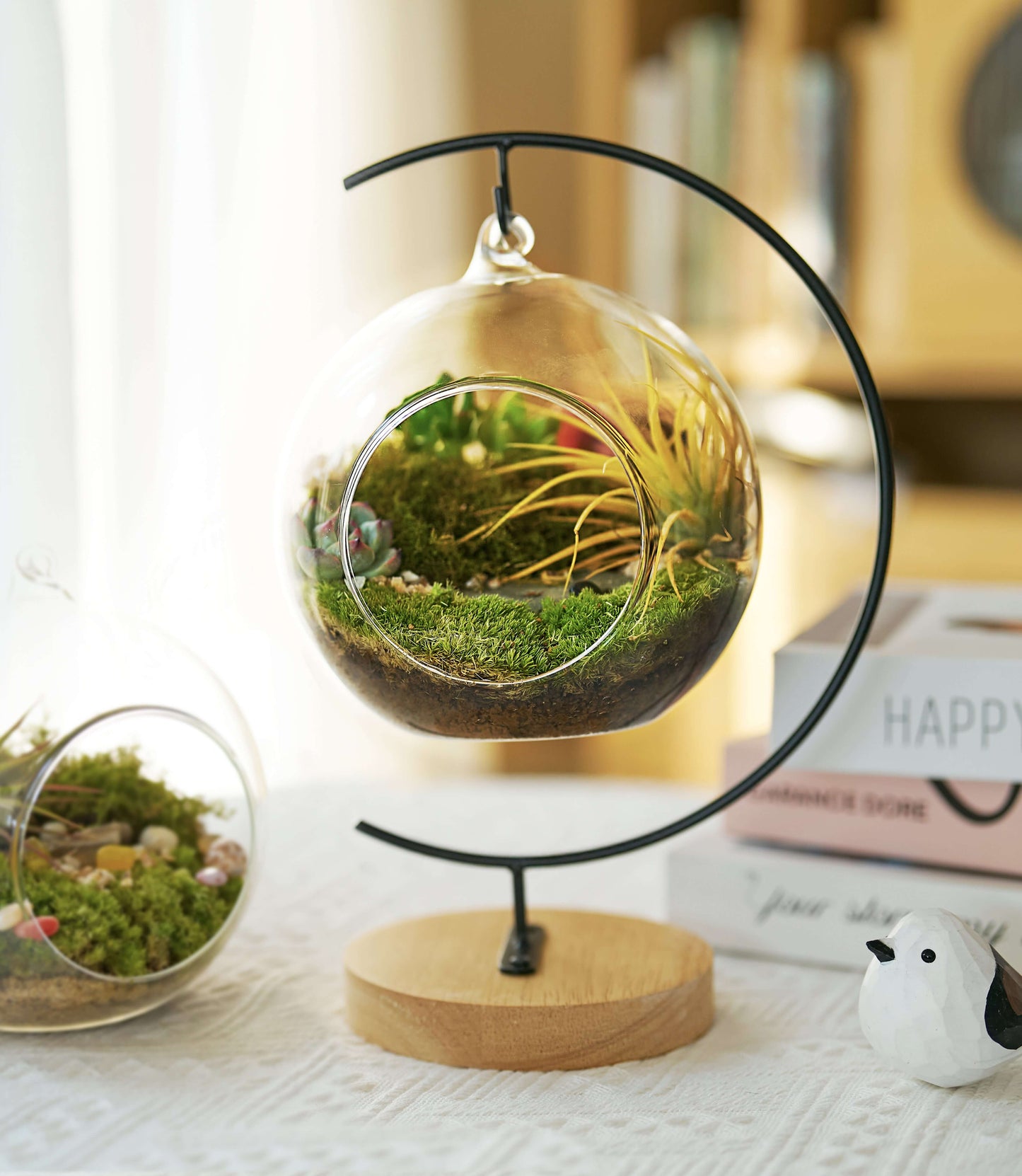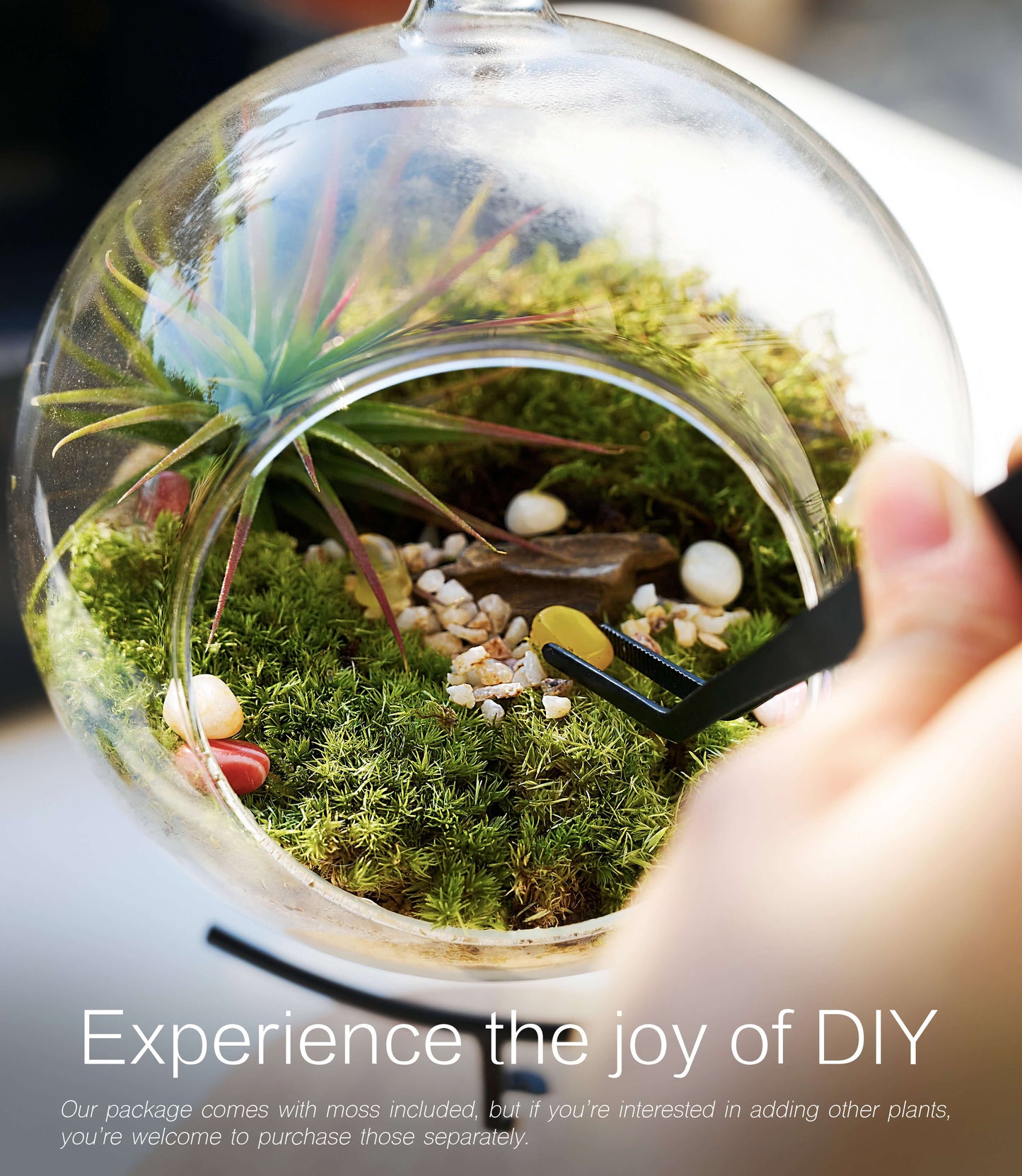Live Moss Care Guide – Moisture Management and Light Regulation (Q21–Q40)
Moisture Management and Light Regulation
You're probably wondering how often to mist your moss, how much water to give it, and whether it's getting the right amount of light. This section will cover water balance and light regulation—two factors that often determine whether moss stays green or turns yellow. By following these tips, you'll learn how to prevent overwatering, avoid dryness, and create the moderate light conditions moss needs to thrive.
Q21|How often do mosses need to be sprayed?
A: It is generally recommended to spray daily or every other day, the frequency can be reduced in areas with high humidity, and once in the morning and once in the evening during the dry season. Flexible adjustment is needed according to the actual dry and wet conditions.
Q22|What problems will too much water spraying cause?
A: Excessive spraying will lead to water on the mossy area, increasing the risk of mold growth and root rot. The ideal condition should be “spraying but not wet, misting but not flooding”.
Q23|Can moss be grown hydroponically?
A: Not recommended. Although mosses can tolerate moisture, they do not tolerate prolonged immersion, which may lead to loosening of the structure and rotting of the rhizomes.
Q24|Do mosses like sunlight?
A: Most mosses like diffused light and do not tolerate strong direct light. Prolonged exposure to sunlight will cause dry tips and pigmentation degradation of the leaves.
Q25|What light intensity is suitable for moss?
A:It is recommended to control in the range of 300-800 Lux. Natural light is best suited for east or north windows, and artificial lighting is recommended to use white light with a color temperature of 5000-6000K.
Q26|Does moss need light at night?
A: No. Mosses do not need to be supplemented with light at night, simulating the natural circadian rhythm is more conducive to healthy growth.
Q27|How can I tell if my moss is lacking light?
A:Common symptoms are dull leaf color, plant growth, and weakening of ground-hugging ability, so you can increase the light hours or use LED supplemental light moderately.
Q28|How to tell if moss has too much light?
A: If the leaf tip is dry and yellow, the edge of the leaf is rolled up and the whole plant is shrinking, it should be transferred to the light diffusing area immediately and strengthen the spraying of water to reduce the temperature.
Q29|Can I use artificial light for moss?
A: Yes, we recommend using full-spectrum LED plant lights and controlling the sunlight duration at 6-8 hours to simulate the natural rhythm.
Q30|How much humidity does moss like?
A:The best relative humidity is 60~85%. If it is lower than 50%, it will dry out easily. If it is higher than 90%, ventilation should be strengthened to prevent mold.
Q31|What should moss do when the humidity is too low?
A: You can increase the frequency of spraying, or put a small humidifier or wet wipes in the closed container to assist in moisturizing.
Q32|What happens when the humidity of moss is too high?
A: Long-term over-humidification will lead to water accumulation at the bottom and induce fungal infection. It is recommended to open the lid for ventilation, reduce water spraying or replace the loose substrate.
Q33|Does moss like rain?
A: A short period of light rain helps to clean the dust and replenish the water, but avoid prolonged rainstorm or waterlogging, and you should choose to dry out promptly after the rain.
Q34|Can I use a spray bottle instead of a sprayer?
A: It is not recommended to use a large droplet spray bottle. Fine mist sprayer or ultrasonic atomizer is recommended to avoid water droplets damaging the structure of moss surface.
Q35|Does the moss need to be air-dried?
A: It is recommended to give 1~2 hours of natural air drying after spraying every day, which helps the leaves to breathe and prevents the water film from covering.
Q36|Can moss be revitalized after drying?
A:Most mosses are resilient. If it is not blackened or moldy, it can slowly regain its green and upright condition in a few hours to days after re-spraying.
Q37|Can moss absorb moisture in the air?
A: Yes. Moss is a natural “air humidity indicator” as it absorbs moisture directly from the foliage.
Q38|Is moss afraid of condensation?
A: Condensation of water vapor in closed containers may lead to water on the leaf surface. You should open the lid regularly to ventilate the room, or lower the room temperature at night to avoid condensation.
Q39|Can moss be exposed to the sun?
A: Direct sunlight is generally not recommended. Only a few, such as gray moss, can tolerate sunlight for a short period of time. Most mosses are suitable for soft light and shaded environments.
Q40|Can mosses be kept indoors in a windowless space?
A: Artificial light can be used to maintain the growth, but make sure that the light time is sufficient, the humidity is suitable, and ventilation is carried out weekly.
Collections
-

Buy Live Sheet Moss – Fresh Moss for Terrariums, Orchids & Home Decor
Bring nature into your home with our fresh Live Sheet Moss. Perfect...
-

Buy Live Cushion Moss – Natural Dome Moss for Terrariums, Bonsai & Indoor Décor
Bring a lush, soft green touch to your projects with Live Cushion...
-

Buy Live Fern Moss – Lush Green Moss for Terrariums, Vivariums & Natural Décor
Fern Moss is a vibrant, feathery-textured moss that adds softness and a...
ICRAFT
15-Piece Terrarium Kit with Live Moss – DIY Glass Globe Set with Tools, Soil, Stones & Spray Bottle – Indoor Mini Garden Gift for Plant Lovers, Home Decor & Zen Craft
